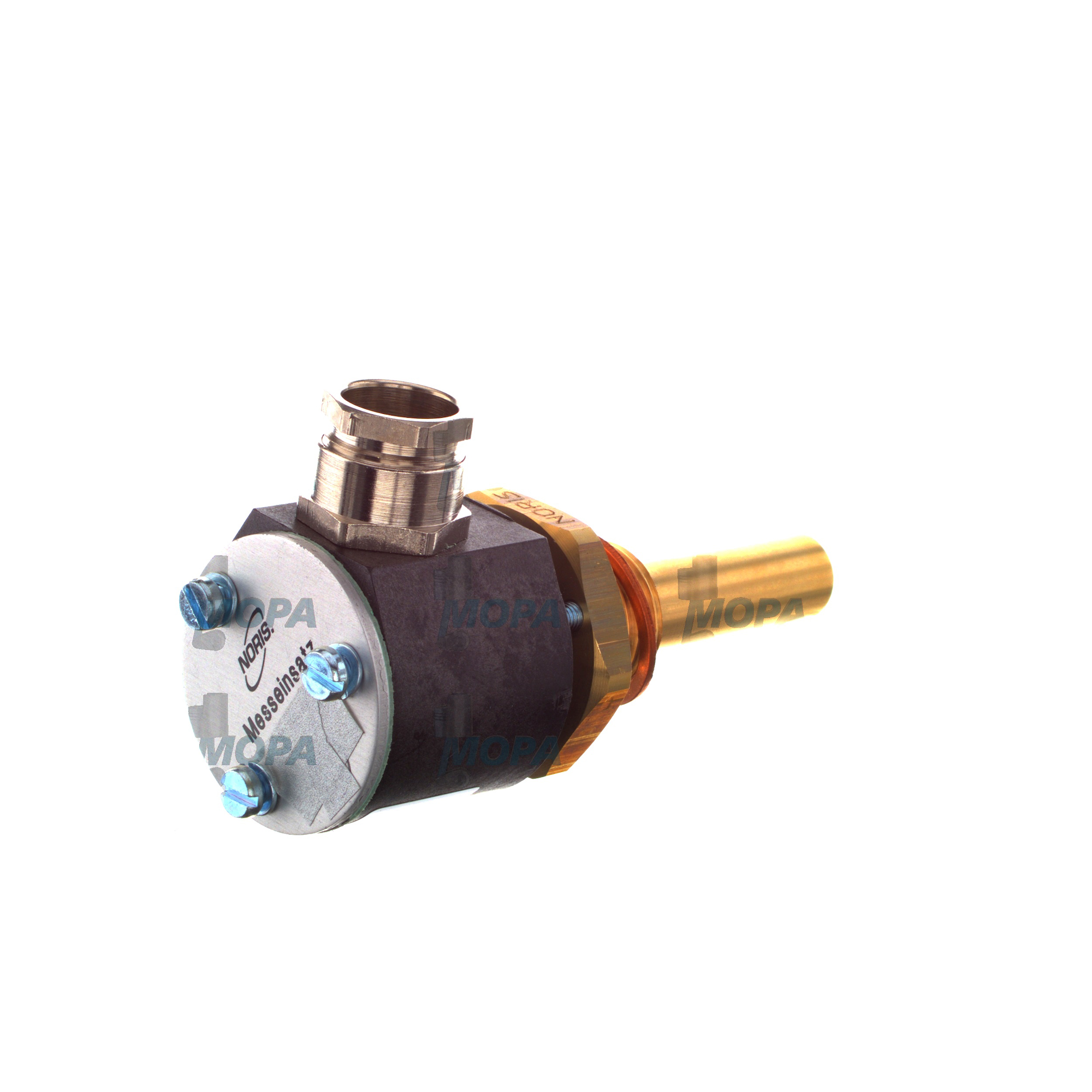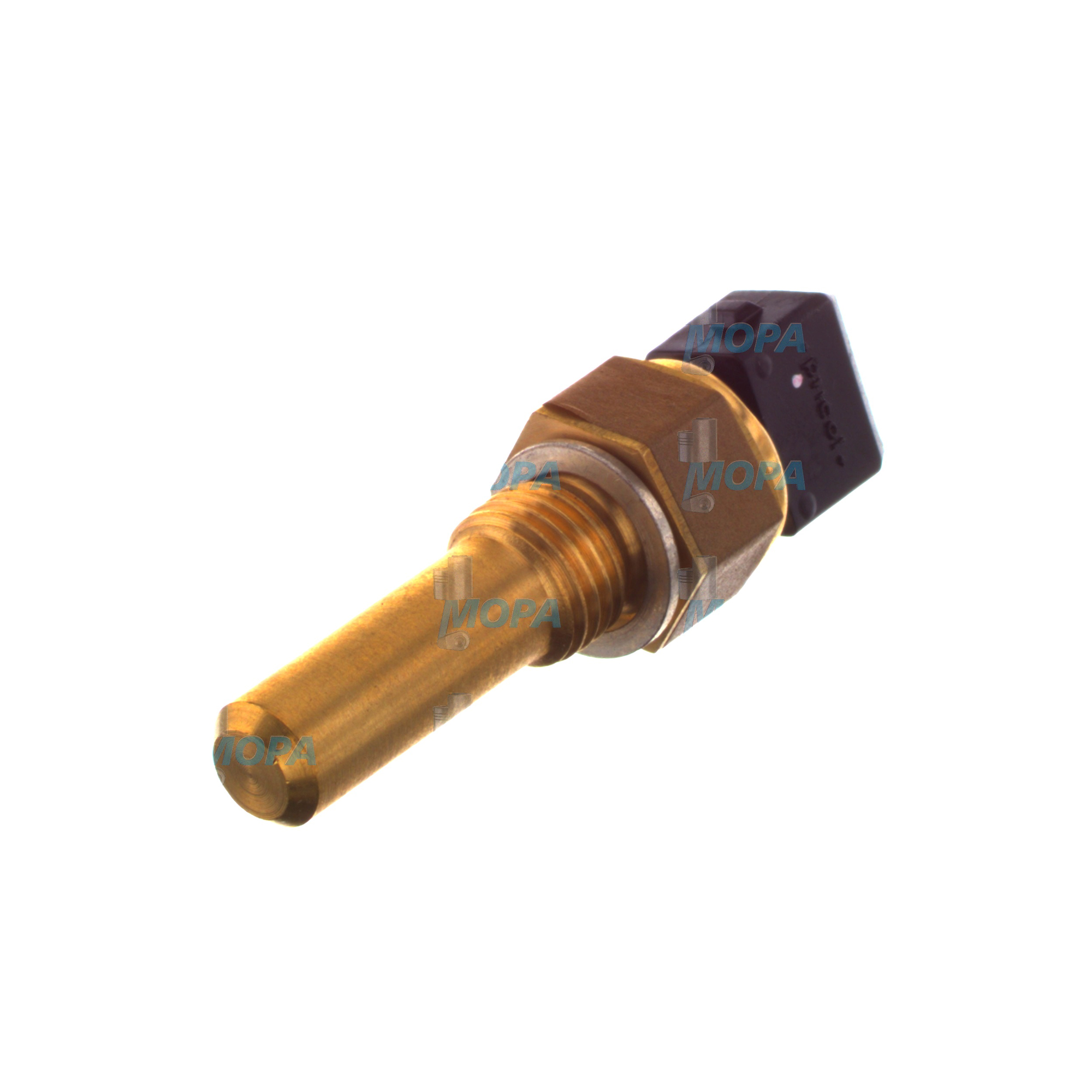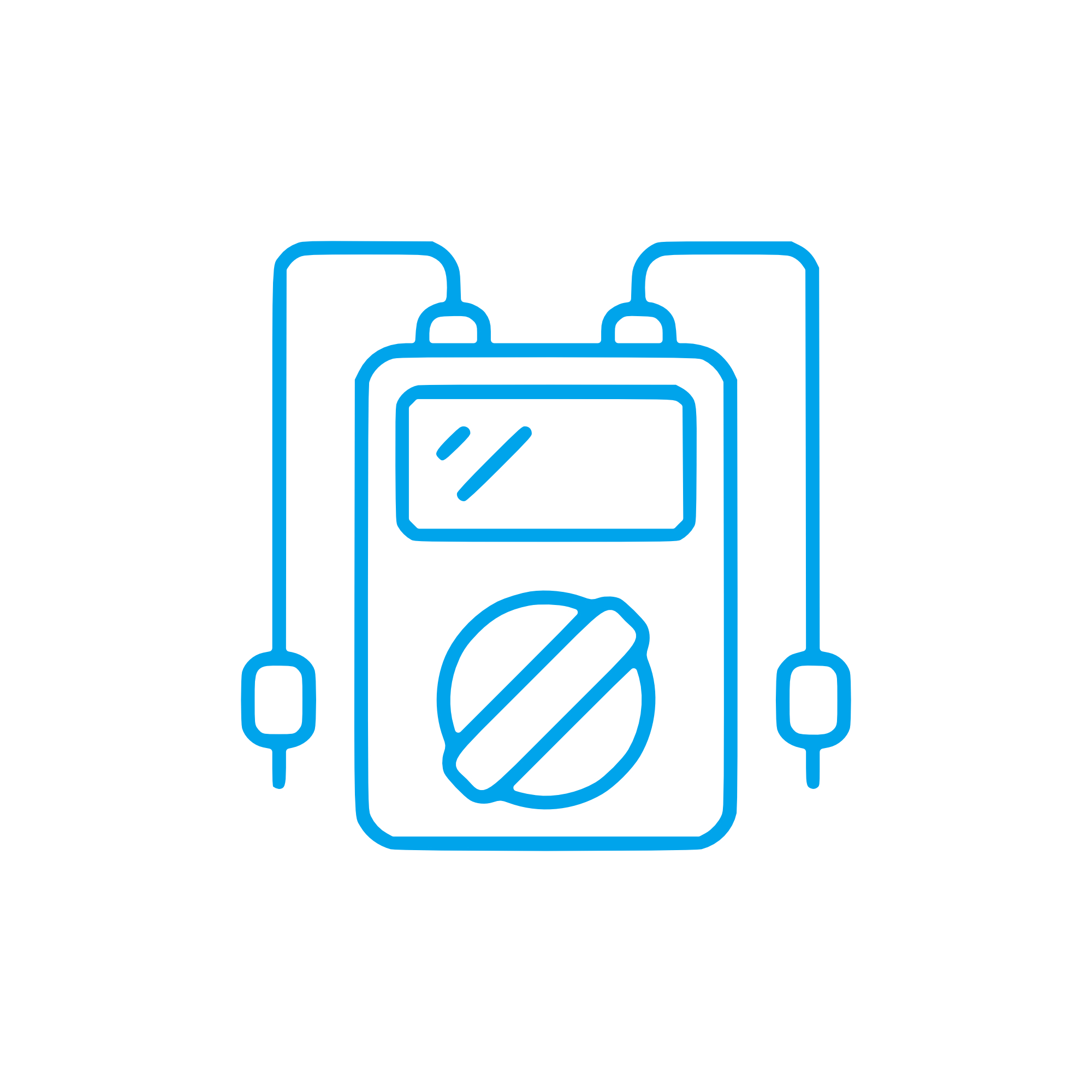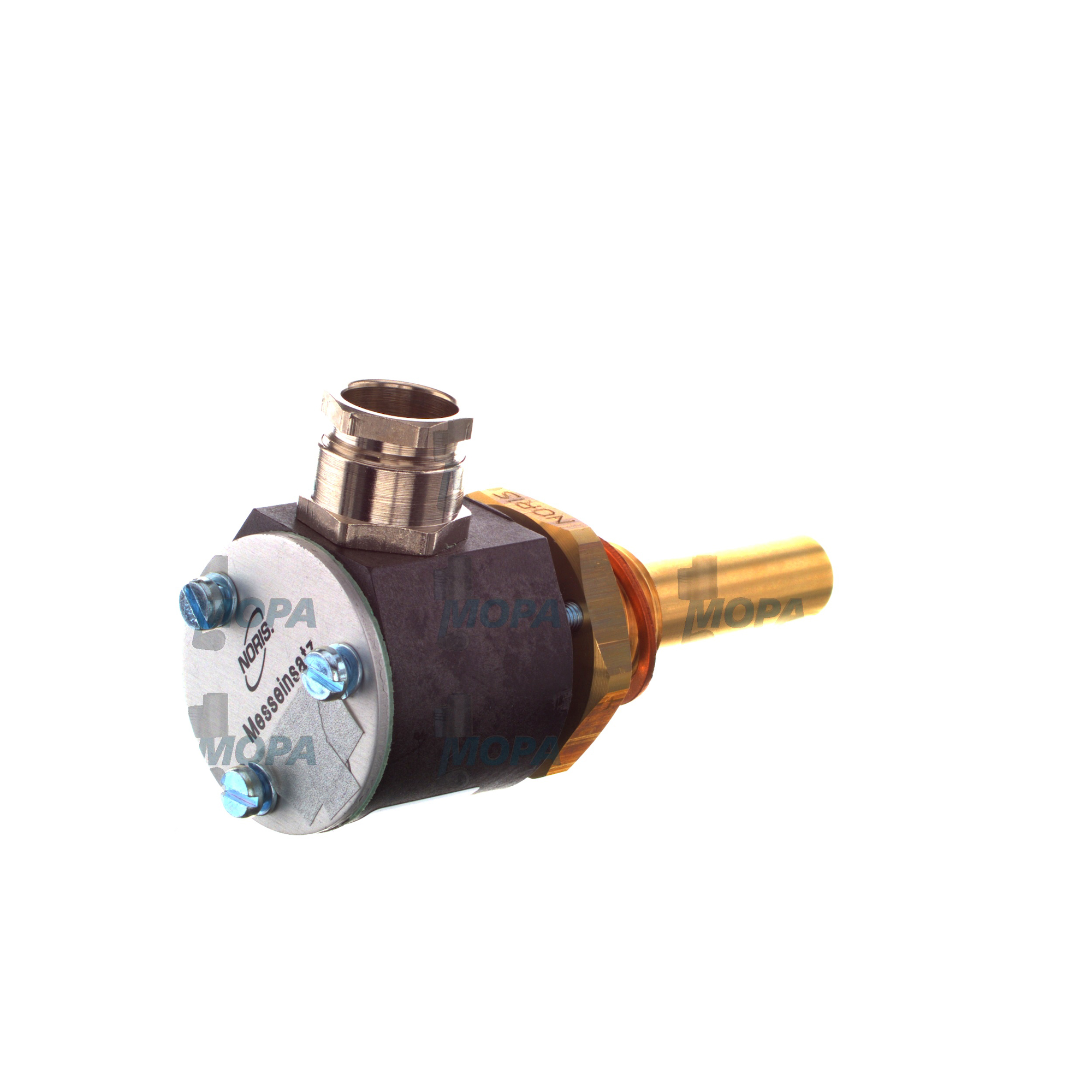TEMPERATUR SENDER for Gauges and Sensors in Marine, Diesel, and Gas Engines
Gauges and sensors are the nervous system of modern engines. They continually capture real-time data—temperature, pressure, speed, vibration, and fluid levels—and convert it into actionable signals for control units and operators. In propulsion systems and generator sets alike, this instrumentation enables precise monitoring and safe control, ensuring that the powertrain delivers output efficiently and remains within critical limits. Within this category, the TEMPERATUR SENDER is a core element: it translates coolant, oil, exhaust gas, and charge-air temperatures into values that dashboards and control systems can interpret and act upon.
Whether installed on a vessel’s main marine engine, an auxiliary diesel engine, or a gas engine running a CHP unit, the right selection and maintenance of gauges and sensors directly influence availability, fuel consumption, emissions, and component longevity. From analog pointers to digital displays and PLC/ECU inputs, these devices form the backbone of condition-based operation and protective shutdown logic.
Technical function of gauges and sensors and the role of TEMPERATUR SENDER
In any engine, gauges and sensors convert physical quantities into electrical signals. Typical signal types include resistive elements (NTC/RTD such as PT100/PT1000), voltage outputs (0–10 V), current loops (4–20 mA), and digital protocols (CAN J1939, Modbus). The control system uses these signals to adjust fueling, timing, boost control, and cooling circuits, while human-machine interfaces display values for operators and bridge teams.
The TEMPERATUR SENDER diesel engine variant, for example, measures coolant and oil temperature to keep thermal stress under control and prevent bearing or liner damage. In a TEMPERATUR SENDER marine engine application, additional senders track jacket-water inlet/outlet temperatures, charge-air cooler performance, and exhaust gas temperature by cylinder, enabling load balancing and early detection of injector or turbocharger faults. When paired with calibrated gauges and ECU inputs, a TEMPERATUR SENDER OEM parts setup ensures consistent scaling, stable response times, and accurate alarms across the full operating range.
Beyond temperature, the wider gauges and sensors category covers oil pressure transmitters, fuel pressure sensors, turbo speed sensors, manifold air pressure and temperature sensors, level switches for day tanks, vibration and knock sensors, and overspeed pickups. Each contributes to closed-loop control or protective functions like derate and shutdown.
- · Fast response for precise thermal control.
- · Stable calibration across extended temperature ranges.
- · Robust housings for vibration and thermal cycling.
- · Corrosion-resistant materials for marine environments.
- · Electrical outputs matched to ECU/PLC inputs (4–20 mA, RTD, CAN).
- · Thread interfaces to common standards (NPT, BSP, metric).
- · EMC-compliant design for reliable signal integrity.
How TEMPERATUR SENDER signals drive performance, efficiency, and safety
Accurate temperature feedback underpins optimal engine mapping. With dependable TEMPERATUR SENDER measurements, the controller can advance or retard injection timing, modulate EGR, and manage cooling fan speeds or sea-water pump flow, cutting fuel consumption and preventing hot spots. On gas engines, cylinder head and exhaust temperature data protects against knock and misfire, while on high-load marine applications, charge-air temperature directly affects density and achievable torque. The safety dimension is equally critical: out-of-limit temperatures trigger alarms, derating, or automated shutdown—functions that rely on sensors being accurate and consistent.
Importance of gauges and sensors for engine reliability and service life
High-quality gauges and sensors are essential for extending engine life. Temperature, pressure, and speed data control lubrication films, thermal gradients, and combustion quality. If a TEMPERATUR SENDER drifts or a pressure sensor develops hysteresis, the control system may undercool or overfuel, causing carbon buildup, ring sticking, bearing wear, or thermal fatigue in the cylinder head. In marine service, salt-laden atmospheres can attack connectors; vibration can loosen terminals; and thermal shock can crack sensing elements. Left unaddressed, these issues lead to false alarms, nuisance shutdowns, or worse—unnoticed overheating that results in warped heads, liner scuffing, or turbocharger damage.
Typical failure modes include corrosion at the probe-sheath interface, insulation breakdown in harnesses, loss of sealing (IP rating compromise), and loss of calibration due to prolonged high-temperature exposure. Proactive replacement and correct sensor selection prevent such problems and support reliable condition monitoring.
Advantages of OEM spare parts suitable for gauges and sensors
For engines that must deliver predictable performance, using OEM spare parts suitable for gauges and sensors provides clear technical and commercial advantages. They are engineered to match the exact sensing technology, output scaling, and mechanical interfaces expected by the engine’s control logic and dashboards. This ensures the TEMPERATUR SENDER OEM parts choice maintains correct alarm thresholds and avoids recalibration and wiring modifications.
Key benefits for purchasers and operators include:
- · Assured compatibility with ECU/PLC inputs and instrument clusters.
- · Consistent response curves that preserve alarm and shutdown logic.
- · Durable materials and seals tailored to diesel and gas engine environments.
- · Lower lifecycle cost by avoiding repeated troubleshooting and rework.
- · Stable inventory planning through standardized part numbers and ranges.
- · Reduced downtime thanks to drop-in fit for threads, connectors, and harnesses.
- · Verified EMC performance to minimize noise-induced faults.
For shipowners, these points translate to dependable availability and predictable maintenance budgets. For technical decision-makers, they safeguard emissions compliance, heat balance, and asset protection.
MOPA as your partner for TEMPERATUR SENDER and gauges and sensors
MOPA is an experienced and reliable partner for OEM spare parts in the Gauges and sensors category, including every critical TEMPERATUR SENDER marine engine and diesel engine application. We focus on speed, quality, and security across the entire trade process—sourcing, documentation, and delivery—so your engines receive precisely matched components with minimal downtime. Our portfolio covers coolant and oil temperature senders, EGT probes, charge-air sensors, oil and fuel pressure transmitters, and matching indicators and cabling for diesel and gas engines. With deep technical know-how, MOPA assists in cross-referencing part numbers, selecting correct ranges and signal types, and aligning sensors with your control system requirements.
Conclusion: why gauges and sensors—and the right TEMPERATUR SENDER—matter
Gauges and sensors underpin safe, efficient operation by providing the real-time data engines need. A precisely matched TEMPERATUR SENDER ensures correct thermal management, protects key components, and supports optimized performance on marine and stationary units. Choosing OEM spare parts suitable for gauges and sensors preserves compatibility, reduces risk, and extends service life—delivering measurable value over the entire operating cycle.






